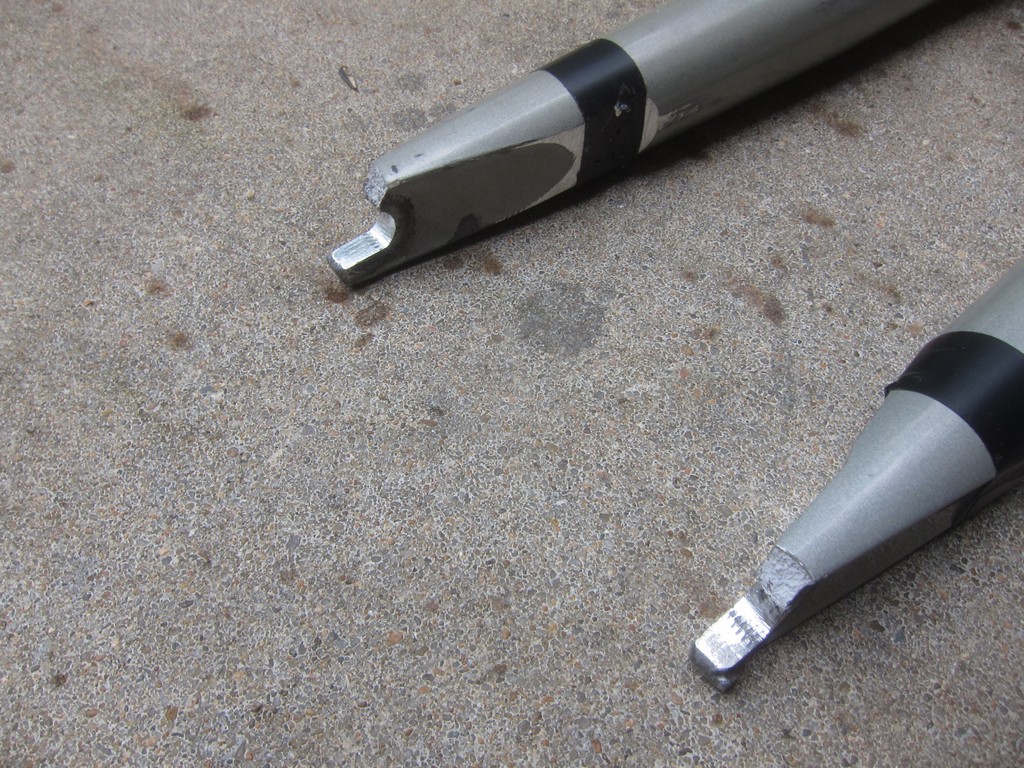I completed my ebike conversion of a 30 year old Diamondback Response Sport mountain bike.
I went with the Dillenger 350w kit with the 26v 10ah battery kit after doing a review of available electric bike kits. I like the Dillenger kit because it had the frame mounted battery (No rear rack), plus it had 5 level pedal assist. I should have done a little more reading/research before installing the hub motor on the old bike. It had a RockShox aluminum fork and after about 15min of riding the fork failed (fortunately at a stop sign). I was naive and did not know that that was unsafe unless you have dual toque arms. Dillenger should really have a WARNING on the web site regarding the use of a front hub motor on an aluminum or allow fork and recommend torque arms if you want to do it.
I ordered a Surly Troll steel fork and installed it along with two (2) torque arms (I know it's overkill but I don't have to think about a failure). Installing the Dillinger kit was fairly easy on this bike accept for the pedal assist ring. This bike had an aluminum pedal crank that was slightly larger than the the sensor ring. I solved the dilemma by filing down a flat spot/groove on the crank and removing all the "fins" on the
pedal assist ring. I also had to enlarge the diameter of the ring to fit over the crank groove. I then epoxied the ring to the crank and it lined up fine.
As part of the upgrade on this old bike I had to replace the old gear shift levers with new and installed a new Shimano Acera v-brake on the front fork. The Surly fork had about 1.8" longer dropout - crown distance compared to the old RockShox. I wanted the handlebars higher for a more comfortable ride
and replaced the old straight handlebars with a 4" rise set... all of which made the bike much better to ride.
I live in a hilly community in central Arkansas and the addition of electric power really makes bike riding more feasible now. I've gone on a couple 10-15 mile rides and the 350w motor + peddling gets me up, down and around with not much effort. Assist Level 3-4 will get me going as fast as I can peddle and seldom need more than 3-4 gears.
All in all I am very pleased with the Dillenger kit and have would recommend it to others.
The only exception being that they really do need a warning about using the front hub motors on aluminum or alloy forks without torque arms OR recommend installing on steel forks only.
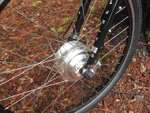
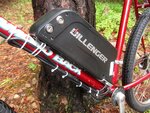
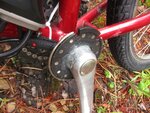
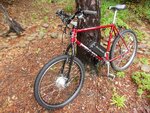
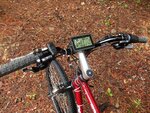


I went with the Dillenger 350w kit with the 26v 10ah battery kit after doing a review of available electric bike kits. I like the Dillenger kit because it had the frame mounted battery (No rear rack), plus it had 5 level pedal assist. I should have done a little more reading/research before installing the hub motor on the old bike. It had a RockShox aluminum fork and after about 15min of riding the fork failed (fortunately at a stop sign). I was naive and did not know that that was unsafe unless you have dual toque arms. Dillenger should really have a WARNING on the web site regarding the use of a front hub motor on an aluminum or allow fork and recommend torque arms if you want to do it.
I ordered a Surly Troll steel fork and installed it along with two (2) torque arms (I know it's overkill but I don't have to think about a failure). Installing the Dillinger kit was fairly easy on this bike accept for the pedal assist ring. This bike had an aluminum pedal crank that was slightly larger than the the sensor ring. I solved the dilemma by filing down a flat spot/groove on the crank and removing all the "fins" on the
pedal assist ring. I also had to enlarge the diameter of the ring to fit over the crank groove. I then epoxied the ring to the crank and it lined up fine.
As part of the upgrade on this old bike I had to replace the old gear shift levers with new and installed a new Shimano Acera v-brake on the front fork. The Surly fork had about 1.8" longer dropout - crown distance compared to the old RockShox. I wanted the handlebars higher for a more comfortable ride
and replaced the old straight handlebars with a 4" rise set... all of which made the bike much better to ride.
I live in a hilly community in central Arkansas and the addition of electric power really makes bike riding more feasible now. I've gone on a couple 10-15 mile rides and the 350w motor + peddling gets me up, down and around with not much effort. Assist Level 3-4 will get me going as fast as I can peddle and seldom need more than 3-4 gears.
All in all I am very pleased with the Dillenger kit and have would recommend it to others.
The only exception being that they really do need a warning about using the front hub motors on aluminum or alloy forks without torque arms OR recommend installing on steel forks only.







